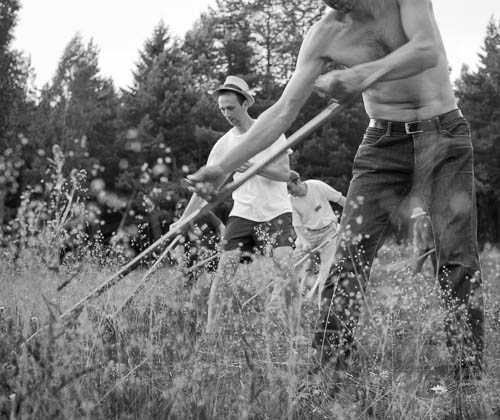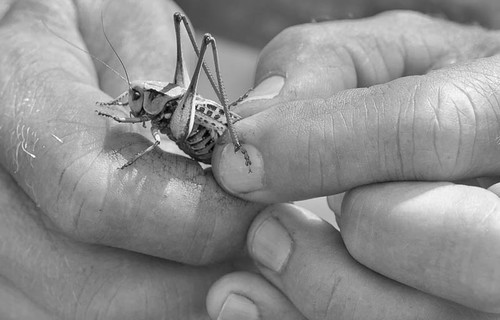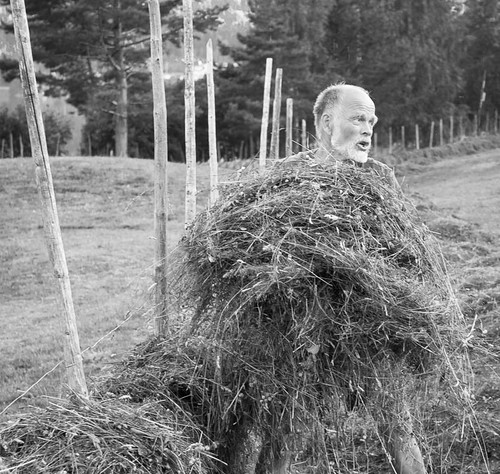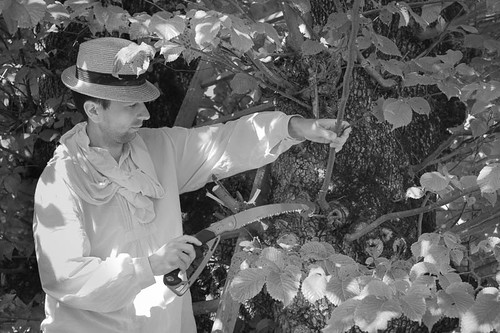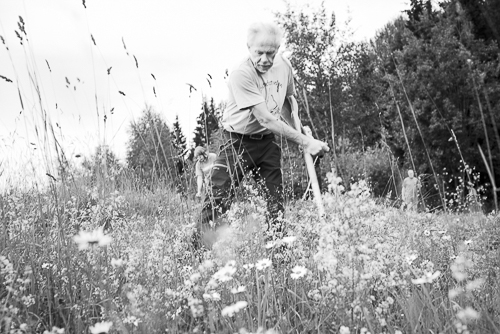Having watched the locals in Maramures in Romania haymaking and setting up huge haystacks, I gradually started thinking abut joining a haymaking course a short distance from where I live. It had been organised annually for the last 20 years by the local Friends of the Earth, but I never got around to joining it. Besides wanting a greater diversity of foods and drinks, I also very much want a greater diversity in nature. Although having just a superficial knowledge of biology, I knew well that meadows are disappearing together with biological diversity. Being better late than never, I joined this year in order to help keeping at least one meadow open.
This year, the course included about 70 participants, most of them from Norway and Sweden, but also groups from Romania and Spain. In all, there were 10 nationalities on the course. Naturally, the other participants came for various reasons, but for me, the haymaking course was a means to an end as explained above.
The meadow we should mow has never been fertilised with artificial fertilisers and it has only been used sparingly as a pasture. Since the depth of the soil is low, it has never been plowed. In fact, before the 1850s, only fields meant for growing food for human consumption were fertilised with animal dung, while saltpeter and artificial fertilisers were gradually put to use later.
A botanist and an entomologist followed us around the meadow before it was mowed, telling us about the local flora and fauna. In fact, this meadow has a huge variety of plants and insects together with various mushrooms and critters living in the soil. By mowing the meadow annually, all plants have to start from the same level such that fast-growing ones which consume lots of nutrients are prevented from out-competing small, slow-growing ones. While honey bees do an excellent job pollinating edible plants grown by man, wild bees, wasps, and bumblebees do a much better job pollinating wild flowers. Since there are so many insects on the meadow, there are also lots of birds feeding on them.
We learnt how to use a scythe and how to keep it sharp besides setting up hay racks. However, I left grinding the scythes to the experts, just using a whetstone to keep my scythe sharp. A big part of the job also consisted of raking the justly cut hay in heaps and bringing them to the hay racks. This was done efficiently by laying a tarpaulin on the ground, raking the hay onto the tarp, and pulling it to the hay rack. The donkey Picasso was also used for this purpose.
The hay racks consisted of a row of vertical, wooden poles standing on the ground and connected by horizonal steel wires. We were asked to shake the hay before we put it on the steel wire in order to make the hay uniform, else parts of it would not dry and start rotting. A secondary reason was spreading seeds of the local flowers on the ground. When the whole row was filled with hay, a new steel wire was attached to the poles about 30 cm higher up and the whole procedure was repeated until the hay rack reached a maximum height of about 1.75 m.
Haymaking has been practised since tools of iron started being made 1500(?) years ago, but animal husbandry has been practised much longer. Since winters in Norway are generally long and cold and the growing season is short, pollarding was used to feed the animals. That is, branches from trees like elm, ash and willow were cut every 5-7 years, collected in bundles, hung up to dry in a draughty place and given to the animals in winter and early spring.
Since there was an old elm tree next to the meadow and the branches on the top of the tree were ready for pollarding, we were given a demonstration on how to do it. After having cut some branches with leaves, the longest ones were laid in parallel on the ground, while the short ones were laid perpendicularly on top. When enough branches had been collected, bark from the branches was taken off and used as a rope to tie the branches together. Afterwards, two volunteers cut the branches, while others were collecting the branches in bundles until the whole tree had been pollarded.
Trees which have been pollarded start rotting inside and become hollow. A large range of mosses, lichens and insects live in these trees, while birds may find nesting places there.
All in all, I liked this course very much and it gave me a good feeling making a small contribution to biological diversity. The invitation to this year’s course can be found here.
For an alternative view of the same course, another participant called Neil Diment, wrote an article which appeared in The Windrow no. 9, 2015 on pages 10 and 11.
Another haymaking course was arranged in 2015 where participants from 14 countries worked together for 3 days. Photos from the course are shown below.
Although haymaking is done the same way every year, it was nice sensing the smell of freshly cut hay again, listening to the scythe cutting hay, trying to move my whole body while scything in order to avoid getting tired easily, raking the hay and shaking it before putting in on the hay racks. I also liked watching swallows flying dexterously, while catching insects, above the meadow. Besides, it was great when an entomologist showed us various types of small creatures, like grasshoppers, insects which look like wasps to scare off predators and another one, which encloses itself in foam.
We also did pollarding this year, but the elm tree, which was pollarded last year was left in peace even though it looked like it had recovered completely. Instead, we pollarded an ash tree and a willow tree and we bound bunches of branches together by means of bark, forming bundles. After having dried, they would be given to sheep in winter as high quality food.
Like last year, we cleared a part of the forest adjacent to the meadow using saws and garden cutters. Actually, this work was the most physically demanding part of the course, first sawing trees, then pulling them further into the forest.
July 2018: the haymaking course was arranged for the 25th and last time by the Friends of the Earth in the county of Buskerud. Since it was an open day on Saturday, I went back again, but only bringing an audio recorder and a microphone. As always, there was a live performance by two musicians together with a group of people who were mowing a meadow, one person after the other, forming a diagonal. The recording can be listened to here.
